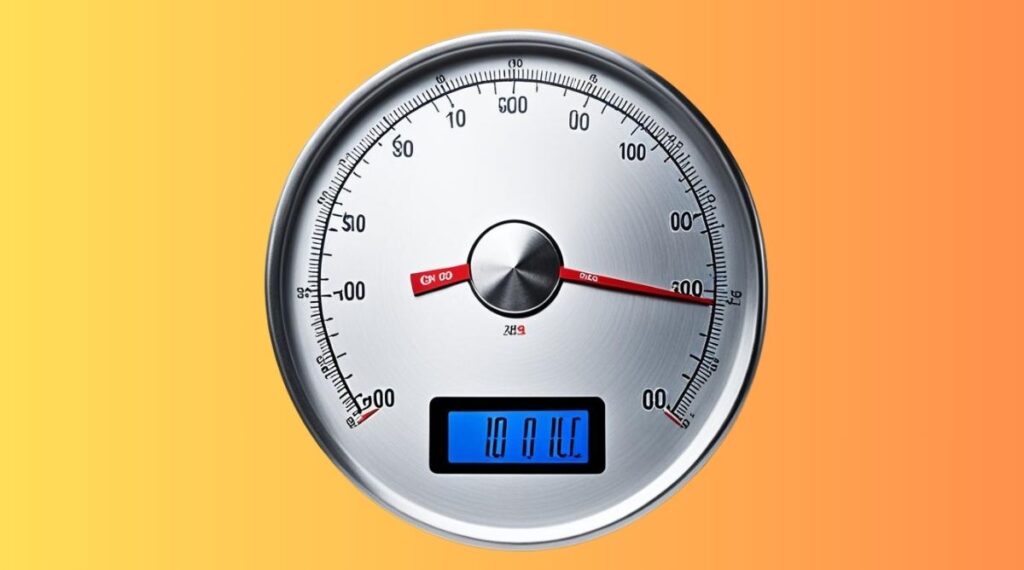How Heavy is 10 kg? 12 Most Common Things That Weigh About 10kg
10 kg is roughly the weight of a small dog or a large bag of flour. Understanding how heavy is 10 kg can help you make better decisions in everyday life, from lifting weights at the gym to packing for a trip.
We’ll break down the significance of this weight measurement and provide relatable comparisons that will put it into perspective. By the end, you’ll have a clearer understanding of how 10 kg fits into your world.
How Heavy is 10 kg?
When considering how much is 10 kg, it’s fascinating to realize that this weight translates to about 22 pounds, a figure often encountered in our daily lives.

For fitness fans, lifting weights becomes easier when we think of 10 kg as about the weight of a medium dog or a large laptop. This comparison makes weight feel more real and helps us use these ideas in our workouts and daily life.
Weight, such as 10 kg, is crucial for recipe accuracy and luggage limits. It varies in significance across contexts, from gym weights to groceries. Recognizing these differences aids decision-making and enhances daily life experiences.
Conversion of 10 kilogram to Pound
Understanding weight conversions, like the 10 kg equivalent translates to approximately 22 lbs, enhances perspectives on measurements. This knowledge is beneficial for international travel and cooking.
- Conversion factor: 1 kg is about 2.2 lbs.
- To convert 10 kg to lbs:
- Calculation: 10 kg × 2.2 lbs/kg = 22 lbs.
- Result: 10 kg is about 22 lbs.
12 Common Things That Weigh About 10 Kg
- A Large Bag of Flour
- Average-Sized Watermelon
- A Standard Dumbbell
- Two Bowling Balls
- Passenger Car Tire (Without Rim)
- Ten Liters of Water
- A 2-Year-Old Toddler
- A Quarter of a Standard Bag of Cement
- Two Domestic Cats
- Two Gallons of Paint
- A French Bulldog
- Four Average-Size Bricks
A Large Bag of Flour
When you think about what weighs 10 kg, a 10 kg bag of flour often comes to mind. Flour is a versatile ingredient essential for various baking recipes, from bread to pastries. A large 22-pound bag allows experimentation without the concern of running out.

Its weight requires consideration for storage and portioning for different dishes. Purchasing flour in bulk is convenient, cost-effective, and ensures a sufficient supply for baking projects.
Overall, a 10 kg bag of flour serves as a valuable kitchen staple, enhancing both value and versatility in baking.
Average-Sized Watermelon
When you think about how big is 10 kg in terms of a watermelon, envision a vibrant green orb that embodies summer itself. The watermelon, averaging 10 kilograms, symbolizes refreshment and joy at outdoor gatherings.

Its thick rind reveals juicy, ruby-red flesh that bursts with flavor. High in water content, it provides hydration and sweetness, making it ideal for hot days.
Despite its large size, the rind protects the fruit inside, enhancing its appeal. Sharing a watermelon at picnics and barbecues fosters connection and creates lasting memories.
A Standard Dumbbell
When you consider what is 10 kg dumbbell can bring to your fitness journey, its versatility stands out. A 10 kg dumbbell, about 22 pounds, is great for both beginners and experienced lifters.

It works well for exercises like bicep curls and lunges, offering a variety of workouts to suit your goals. Using a 10 kg dumbbell promotes muscle building and correct form, reducing injury risk.
Two 5 kg dumbbells can enhance resistance and challenge muscles, crucial for strength training. A 10 kg dumbbell serves not only as equipment but also as a tool for improving strength and endurance.
Two Bowling Balls
Two standard bowling balls weigh approximately 10 kilograms, averaging 5 kg each. Holding one feels solid and heavy, making it easier to visualize the weight of 10 kg by imagining lifting two at once.
Lifting these two heavy spheres not only tests your physical capability but also serves as a reminder of how much is 10 kg in tangible terms.
Passenger Car Tire (Without Rim)
A standard passenger car tire weighs about 10 kilograms, balancing durability, traction, and fuel efficiency. This weight indicates its robust design for daily driving and varied terrains. The 10 kg reference point relates to familiar items, enhancing our appreciation of tire engineering.

While compact tires are around this weight, larger SUV tires also approach it, reflecting the vehicle design’s influence on specifications. Understanding tire weight is essential for consumers considering lifting restrictions or workouts.
This knowledge empowers informed consumer choices and encourages innovative thinking about everyday objects.
Ten Liters of Water
Kilograms and liters measure different states, showcasing the complexities of density and weight relationships. For instance, when we think about how big is 10 kg, it’s easy to visualize a 10-liter container filled with water, as they correspond closely in weight.
The text emphasizes the relationship between measurement principles and natural balance, exemplified by one liter of water weighing approximately one kilogram.
Weight equivalence varies across liquids like milk and juice due to differing densities. A liter of milk can weigh more than water because of its fat content, while juice may weigh less.
A 2-Year-Old Toddler
A 2-year-old usually weighs 10 to 12 kg, indicating important growth and cognitive development milestones.

For parents and caregivers, understanding how heavy is 10 kg can put into perspective the sheer energy and curiosity encapsulated within this small frame.
A 10 kg toddler embodies innocence and curiosity, exploring their environment and developing motor skills. Through play, such as climbing, running, and dancing, they improve coordination and balance, laying the groundwork for future physical health.
A Quarter of a Standard Bag of Cement
While a standard cement bag weighs about 40 kg, the lighter 10 kg quarter bag is ideal for small projects. Its manageable weight facilitates easy transport and mixing for DIY enthusiasts and small-scale builders.
This practical option resembles the weight of a medium-sized dog or heavy textbooks, making it suitable for various renovation tasks.
Cement binds aggregates to create durable concrete, enhancing small structures’ strength and longevity. Even 10 kg of cement can significantly improve garden pathways or fire pits.
Two Domestic Cats
Domestic cats weigh 7 to 9 kg, similar to small everyday items. Their presence provides comfort and warmth, akin to a cozy blanket.

Beyond companionship, cats serve as stress relievers, releasing endorphins through their snuggles. Their weight against you symbolizes emotional support, highlighting the joys they bring to life.
Just as things that weigh 10 kg can signify stability and comfort, so too do our feline friends embody the essence of companionship and tranquility.
Two Gallons of Paint
Understanding paint weight is crucial for DIY enthusiasts. A gallon weighs about 10 pounds (5 kg), so two gallons weigh around 10 kg. This knowledge aids in planning, particularly for larger spaces or multiple rooms.
Knowing how heavy is 10 kg can help you gauge how much paint to buy and manage the logistics of transporting it to your work area.
A French Bulldog
French Bulldogs, or Frenchies, weigh about 10 kg, typically ranging from 8 to 14 kg. Males are generally heavier than females, showcasing a robust appearance. This weight reflects their compact, muscular build, complementing their playful nature.

When you think about what 10 kg looks like, picture a French Bulldog or a large house cat, perfect for cuddling on the couch or taking leisurely walks.
Four Average-Size Bricks
Bricks provide a relatable example of weight, with a standard red brick weighing about 2.27 kg. Four bricks together weigh around 10 kg, similar to lifting a grocery bag or a small pet.
This simple arithmetic not only helps in understanding weight but also serves as a practical benchmark for those curious about what weighs 10 kg in everyday life.
Weight variation in bricks can arise from moisture content and manufacturing differences. Despite these inconsistencies, the overall measurements remain consistent, offering a reliable basis for comparison.
Also find How Much is 500 Grams? (With Pictures)
Conclusion
Grasping how heavy is 10 kg can enhance our appreciation for various objects and activities around us. This weight is similar to carrying a backpack filled with books or a small suitcase, providing a tangible reference point for many people.
Understanding the weight of 10 Kg is beneficial for activities like exercising and cooking. It highlights our physical limits and the need to be cautious with the loads we lift.
FAQs
Is 10kg Weight Heavy?
The perception of 10kg as heavy varies based on individual fitness, experience, and context. Regular exercisers may find it manageable, while novices might struggle with the weight.
How Many Clothes are 10 kg?
Clothing weight varies by type, material, and size. A t-shirt averages 150-200 grams, while jeans or jackets can exceed 500 grams. With an average weight of 250 grams per item, 10 kg equals about 40 pieces of clothing.
What Weight is 10 kg?
Ten kilograms (10 kg) equals approximately 22 pounds and 0.736 ounces, calculated using the conversion factor of 2.20462 pounds per kilogram.







